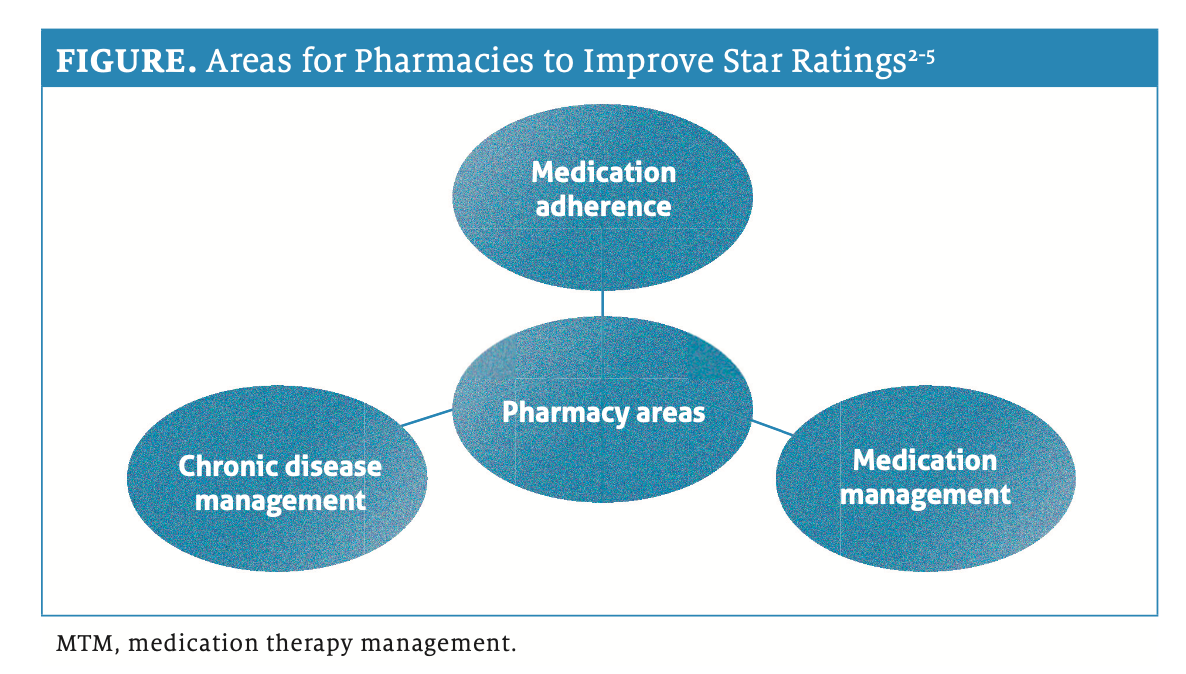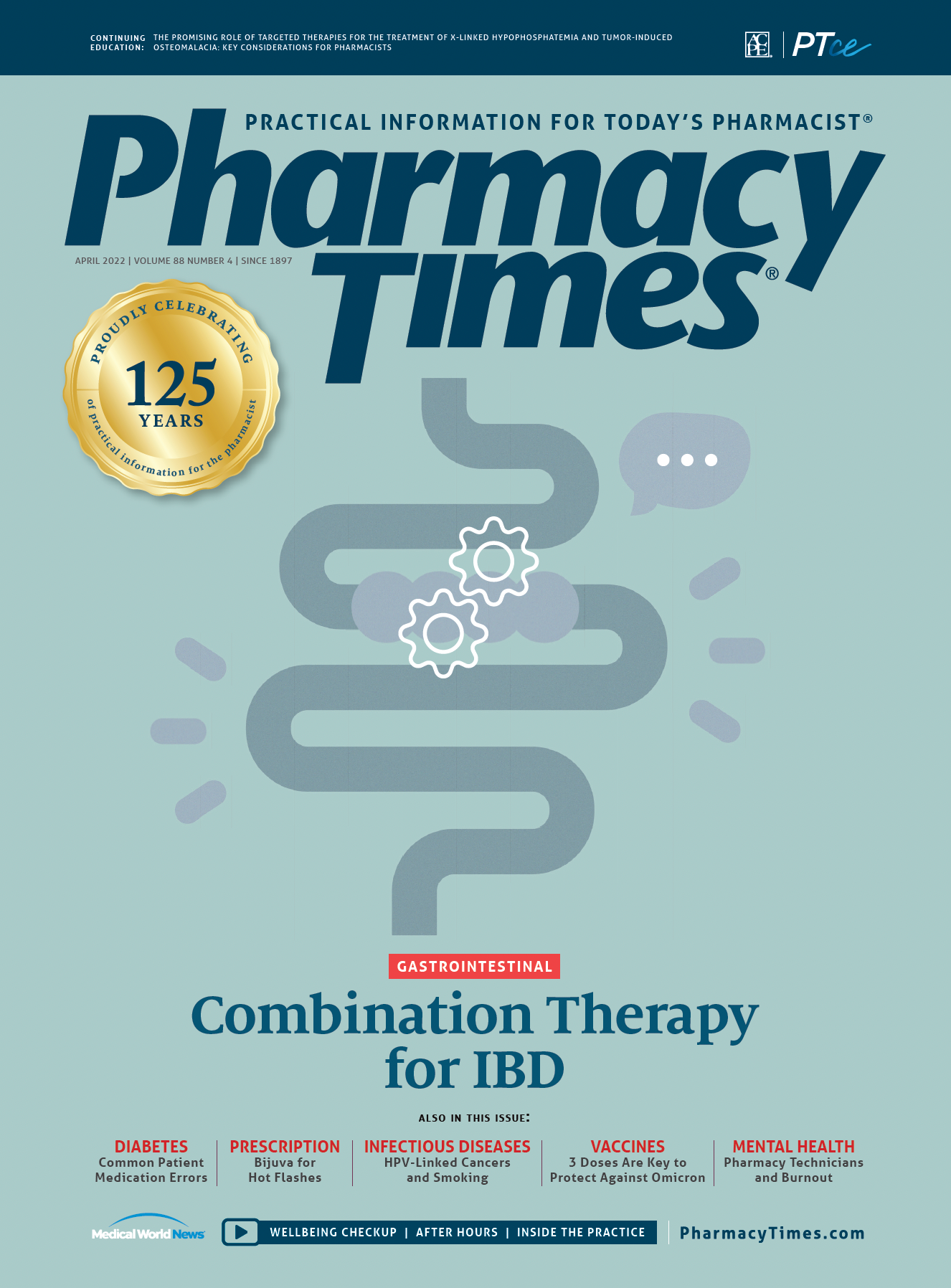Publication
Article
Pharmacy Times
Services to Improve Therapeutic Outcomes Improve Star Ratings
Author(s):
Pharmacists can offer medication adherence and management counseling and help patients with chronic disease treatments.
The Centers for Medicare & Medicaid Services (CMS) reated the Part C & D Star Ratings to provide performance and quality information to Medicare beneficiaries and help them select health and drug services during the annual fall open enrollment period.1,2
Plans are rated on a 1-to-5 scale, with 1 star indicating poor performance and 5 stars representing excellent performance.1
Approximately 68% of Medicare Advantage plans with prescription drug coverage typically had an overall rating of at least 4 stars in 2022, up from 49% in 2021.1 Pharmacists can play an important role in improving Star Ratings through medication therapy management (MTM) services.
According to the CMS, Star Ratings apply to the following 5 categories2:
1. Access: measures that reflect issues that can create barriers to receiving necessary care
2. Intermediate outcomes: measures, such as blood glucose control for diabetes care, that can improve a patient’s health status
3. Outcomes: measures that demonstrate health improvement
4. Patient experience: measures that reflect patients’ perspectives of the care they received
5. Process: measures that capture services that can assist in maintaining, monitoring, or improving health status
Pharmacies can increase Part D health plan Star Ratings through chronic disease management, medication adherence, and medication management, (see Figure).2-5

Medication adherence tracks the percentage of plan members taking prescribed antihypertensive, cholesterol, and diabetes medications as directed.2,3 Medication adherence is critical and therefore considered
a triple-weighted Star Ratings measure.3 Medication management involves the percentage of MTM program enrollees who received a comprehensive medication review (CMR).2,3 Chronic disease management is defined as the percentage of Medicare Part D beneficiaries, 40% to 75%, who were dispensed at least 2 diabetes medications and cholesterol-lowering statin.2
One study measured the impact of community pharmacist interventions at improving medication adherence at 25 independent pharmacies that implemented a program for patients 65 years and older who were Medicare Advantage Plan members.4
The study population included patients taking targeted medications, such as angiotensin-converting enzyme inhibitors, angiotensin receptor blockers, oral diabetic medications, and statins. There were 1263 interventions that met the eligibility criteria.4 Among patients who were nonadherent and became adherent, the average change in proportion of days covered (PDC) increased by 14% (P < 0.0001).4 Commonly reported barriers to patient adherence included forgetting to take medications (35.7%), regimen complexity (12.3%), denial (6.7%), and adverse effects (3.3%).4
The OutcomesMTM platform includes a Star Boost Adherence program for Medicare plans.5
Through a multichannel approach, pharmacies can choose the desired Star Rating for each adherence measure.
The target rate of members who reach at least 80% PDC can also be selected along with the goal of completed adherence interventions.5 Pharmacist interventions are driven by the Targeted Intervention Programs (TIPs) used in the Connect Platform to maintain medication adherence, and charts display the PDC rates 3 months pre- and post-MTM services.5 Through the OutcomesMTM program, services can also target members who are non-adherent or at risk of becoming nonadherent to drug regimens. These pharmacy services are available through the Star Boost Adherence program and include the following5:
• Adherence monitoring program: monitoring adherence, including checkpoints throughout the year to meet goals
• Medication synchronization: developing a common fill date for chronic medications
• Needs check-in: educating patients about the importance of adherence and how to overcome barriers
• Needs disease state education: educating patients about disease states, lifestyle modifications, and medication monitoring
• Needs 90-day fill: assisting patients with transitioning from a 30- to a 90-day supply to improve adherence
• Needs refill: ensuring patients have an adequate supply of medications on hand
• New therapy consultation: ensuring that patients follow up after initiating a new medication
Jennifer Gershman, PharmD, CPh, PACS, is a drug information pharmacist and Pharmacy Times® contributor who resides in South Florida.
References
1. CMS releases 2022 Medicare Advantage and Part D Star Ratings to help Medicare beneficiaries compare plans. Centers for Medicare & Medicaid Services. October 8, 2021. Accessed February 9, 2022. https://www.cms.gov/newsroom/ press-releases/cms-releases-2022-medicare- advantage-and-part-d-star-ratings-help-medicare-beneficiaries-compare
2. Medicare 2022 Part C & D Star Ratings technical notes. Centers for Medicare & Medicaid Services. Updated October 4, 2021. Accessed February 7, 2022. https://www.cms.gov/files/document/2022-star-ratings-technical-notes-oct-4-2022.pdf
3. What Star Ratings really mean to your pharmacy. AmerisourceBergen. January 6, 2020. Accessed February 9, 2022. https://www.amerisourcebergen.com/insights/pharmacies/what-star-ratings-really-mean-to-your-pharmacy
4. Daly CJ, Verrall K, Jacobs DM. Impact of community pharmacist interventions with managed care to improve medication adherence. J Pharm Pract. 2021;34(5):694-702. doi:10.1177/0897190019896505
5. Star boost adherence for Medicare plans. OutcomesMTM. Accessed February 9, 2022. https://outcomesmtm.com/health-plans/starboostadherence/






